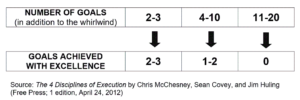One of the hardest lessons to learn when we get promoted to a position of leadership: we are no longer responsible for doing the job, we are now responsible for the people who do the job. ~Simon Sinek
 I’ve quoted Simon Sinek a number of times; yes, I’m a fan. Simon’s most recent book Together is Better is being released today. I don’t think I’ve ever promoted a specific book so this is a first. I’ve obviously not read the book, but my copy is on order. I trust that this book will continue to reinforce Simon’s ideology.
I’ve quoted Simon Sinek a number of times; yes, I’m a fan. Simon’s most recent book Together is Better is being released today. I don’t think I’ve ever promoted a specific book so this is a first. I’ve obviously not read the book, but my copy is on order. I trust that this book will continue to reinforce Simon’s ideology.
Here’s another quote from the post introducing Together is Better. “Leadership is hard work. Not the hard work of doing the job—it’s the hard work of learning to let go. It’s the hard work of training people, coaching people, believing in people, and trusting people. Leadership is a human activity. And, unlike the job, leadership lasts beyond whatever happens during the workday.”
Leadership is hard work, and precisely for the reasons Simon has listed. Sometimes I like to think of leadership as managing with your hands tied behind your back. Meaning, you aren’t doing the work yourself, but you are getting the work done through others. You have to let go, but that doesn’t mean turning your back. It means training, coaching, believing, trusting—all really hard things to do, especially if you’re a highly driven individual.
Have you ever been in a meeting with “leaders” when a problem is identified and then they say the cause of that problem is their subordinate? I put the word leaders in quotation marks for a reason. If they were truly leaders as Simon has defined it, then they would be taking responsibility for those people, instead of passing the buck down the line to those people (aka: throwing them under the bus).
When something isn’t working, I’m frequently a bit surprised by how quickly leaders want to move people into another position or move them out of the organization. As a culture, sometimes it feels to me like we’ve lost a great deal of patience for training and coaching, thinking that doing the work ourselves or replacing people will somehow solve the problem.
Here’s an idea. For one week, track your time at work down to 15-minute intervals. Then go back and first identify how much of your “leadership” time was spent training and coaching people. Second, look at what’s remaining and determine how much of that time you could “let go” of and hand off to someone else as a training or coaching opportunity?
Leaders believe in and trust people.




